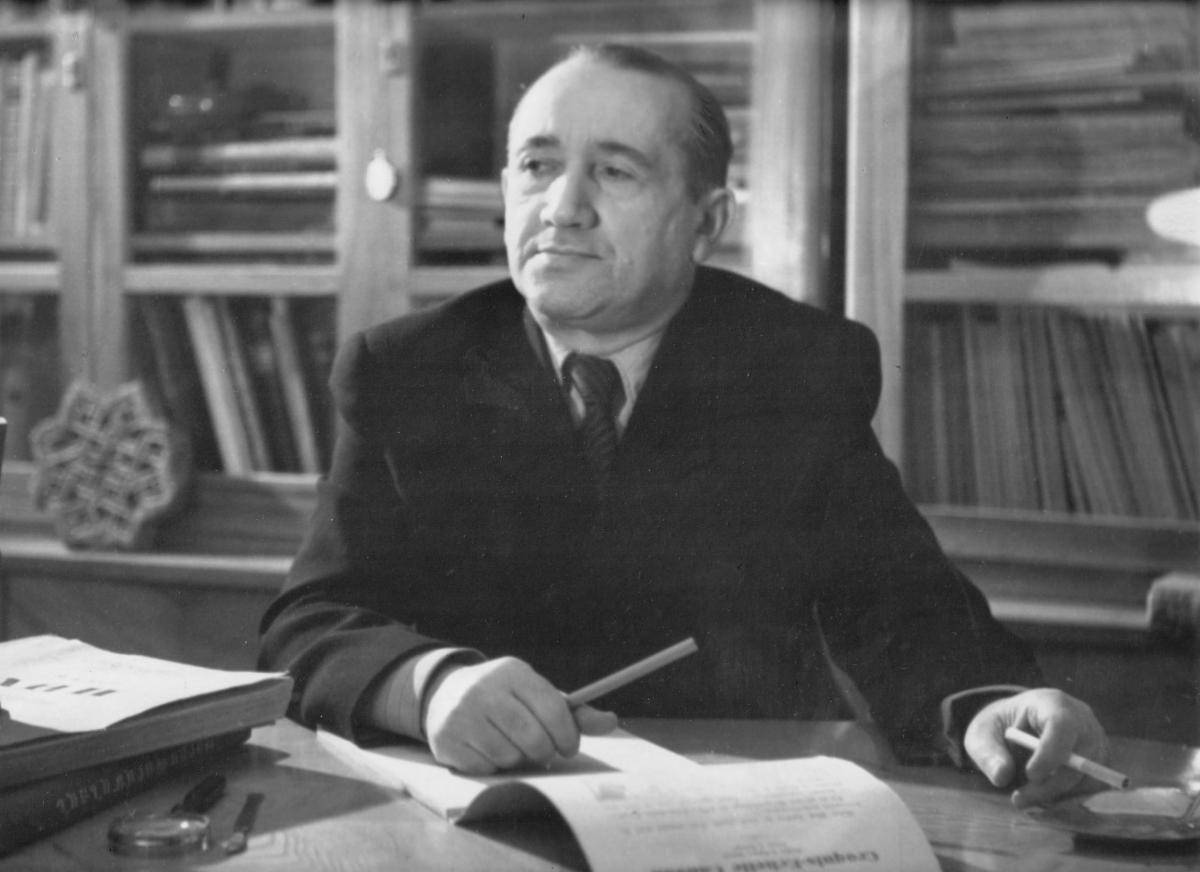Mikayel Mazmanian was an influential name in Soviet Armenian architecture, and his production, because of Stalinist repression, went far beyond the borders of Armenia.
He was born in Tiflis (Tbilisi), the capital of Georgia, on November 21, 1899. In 1918, he graduated from the Nersisian School. Previously, in 1916, he had participated in the excavations of Ani and copied the frescoes of the church of St. Gregory (built by Tigran Honents), following archaeologist Nikolai Marr’s indications. He also showed his artistic abilities, participating with caricatures and paintings in the first (1917) and second (1919) exhibitions of the Union of Armenian Artists of Tiflis.
In 1921, by the recommendation of painter Martiros Sarian, Mazmanian entered the newly founded Vkhutemas (Higher State Artistic and Technical Workshops) in Moscow. During his years of study, he created series of posters and caricatures, illustrated books, designed plays, and translated books into Armenian. He was friends with the great Armenian poet Yeghishe Charents and in 1924 he was involved with his “left art” group Standard, which was an Armenian equivalent to Communist avant-garde groups like LEF in Moscow.
In 1926 the Vkhutemas was reorganized as Vkhutein (Higher Artistic and Technical Institute) in Leningrad (now St. Petersburg) and Mazmanian graduated from there in 1929. He became founding member of the All-Russian Union of Proletarian Architects (1929) and the Armenian Union of Proletarian Architects (1932).
After spending most of the decades in Russia, Mazmanian was sent to Armenia in 1929. He would become one of the organizers of technical education in the country as the first director of the Institute of Construction of Yerevan (1930-1935). The master plans of the cities of Alaverdi (1929-1930), Ghapan (Kapan, 1930), Leninakan (Gumri, 1932-1937), and Kirovakan (Vanadzor, 1934-1937) were designed under his direction. He was also the author of the design of several remarkable buildings of Yerevan in this period, including the Club of Constructors (1928-1929, now the Russian Theater and the Sports Committee), the Book Palace (1935-1940), and the Central Supermarket (1936-1937). Mazmanian and his colleague Gevorg Kochar, both followers of constructivism, headed the architectural studio of the design organization “Giprogor” (1932-1937) and designed the Sevan Writers’ Resort (1932) of the Writers Union of Armenia.
Mazmanian and Kochar were among the victims of the Stalinist purges in 1937. They were arrested and deported to the Arctic Circle in 1939. They would spend fifteen years in the coldest place in the world and turn the permafrost of the camp of Norilag into the city of Norilsk (1939-1954), modeled after Yerevan. They also designed the Siberian city of Dudinka (1949-1954). They were rehabilitated after the death of Stalin in 1953.
Mazmanian returned to Yerevan in 1954. He became the head of the design office of the City Hall in the same year and the head of the department of Urbanism in the Institute of Planning of Yerevan in 1958. He led the design of different neighborhoods of the city (1955-1969) and the detailed plan of the city (1967-1968). From 1957-1971 he was the president of the committee of architecture and construction of the Holy See of Echmiadzin. He earned the titles of Emeritus Worker of Art of Armenia (1959) and Emeritus Architect of Armenia (1968), and was decorated with the Order of Honor and the Red Banner of Labor.
The last project he directed was the master plan for Yerevan with a population of one million inhabitants (1971). He passed away on October 29, 1971. A street of Yerevan bears Mazmanian’s name.
